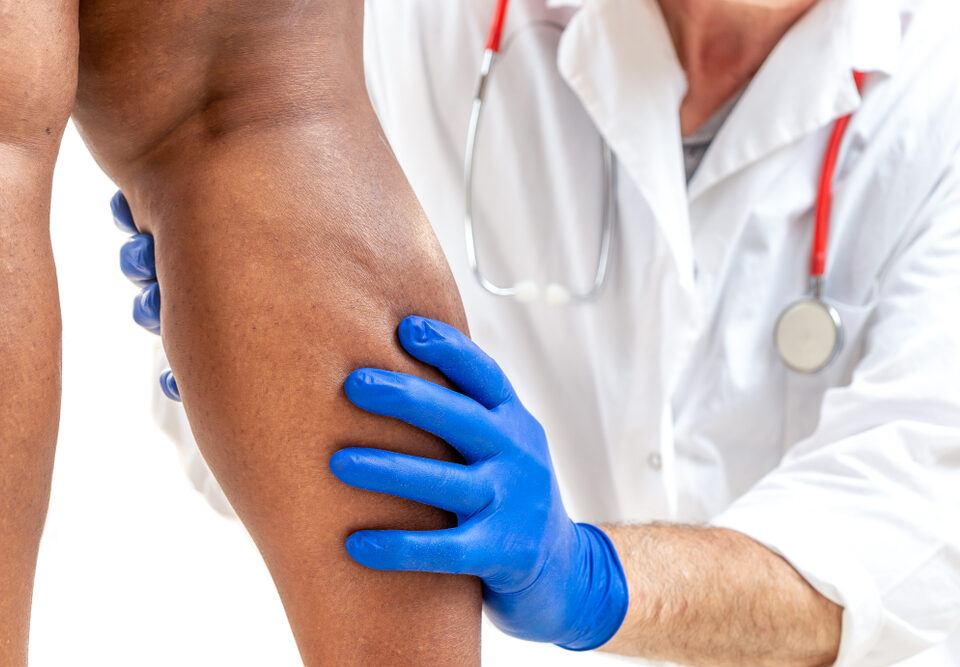
Don’t Let Spider Veins Haunt You This Halloween
October 15, 2018
Leg Swelling: Leaky Vein Valves or Something Else?
November 19, 2018Whether or not we realize it, vein health is crucial to our overall well-being. In fact, when blood clots form in deep veins, they can lead to a condition called deep vein thrombosis (DVT).
If left untreated, DVT may even be fatal. That’s why it’s so important for individuals to understand the causes, risks, and symptoms of DVT.
Keep reading for answers to deep vein thrombosis frequently asked questions.
Deep Vein Thrombosis (DVT) – What Is It?
DVT stands for deep vein thrombosis and is a serious medical condition in which a blood clot forms in the deep veins of the legs.
It has the potential to travel to the lungs and cause a pulmonary embolism, which can be life-threatening.
What Are the Causes of DVT?
A clot is the result of blood cells clumping together, and it can occur for a number of reasons.
Individuals should be aware that long periods of immobility, such as air travel or being on bedrest after surgery or an accident, can cause decreased blood flow in the veins. This deviation can then make blood cells more likely to stick together and form a clot.
Factors like pregnancy, certain medications, and inherited conditions can also affected clotting mechanisms.
Finally, when vein walls are damaged from a surgical procedure, another form of trauma, or inflammation, blood cells may try to bind together in an attempt to repair the vein.
What Are the Risk Factors for DVT?
Individuals that are over 40 are at increased risk for DVT, as well as those with a past history of DVT or pulmonary embolism.
Additionally, existing health issues, such as cancer treatment and surgery (especially to the pelvis, hips, or knees) can up your chances of forming a deep vein blood clot.
Women that are pregnant, who recently gave birth, are on hormone replacement therapy, or are taking oral contraceptives are also more likely to experience DVT.
Lastly, a genetic clotting condition or a family history of DVT or blood clots are other risk factors.
What Are the Symptoms of DVT?
DVT may present with some or all of the following symptoms in one leg. These include pain and tenderness in the leg, swelling in the leg, redness and/or discoloration in the leg, inability to bear weight on the affected leg.
However, it’s also possible for DVT to be asymptomatic.
How Is DVT Diagnosed and What Is the Treatment?
DVT requires immediate medical attention and may be diagnosed at the ER by a blood test and ultrasound scan.
Treatment typically includes anticoagulants like heparin or warfarin which prevent clotting. Nevertheless, a customized treatment plan will be developed for each patient’s circumstances.
To learn more about blood clots, DVT, and vein health, please call our office today to schedule a consultation with one of our vein specialists.



